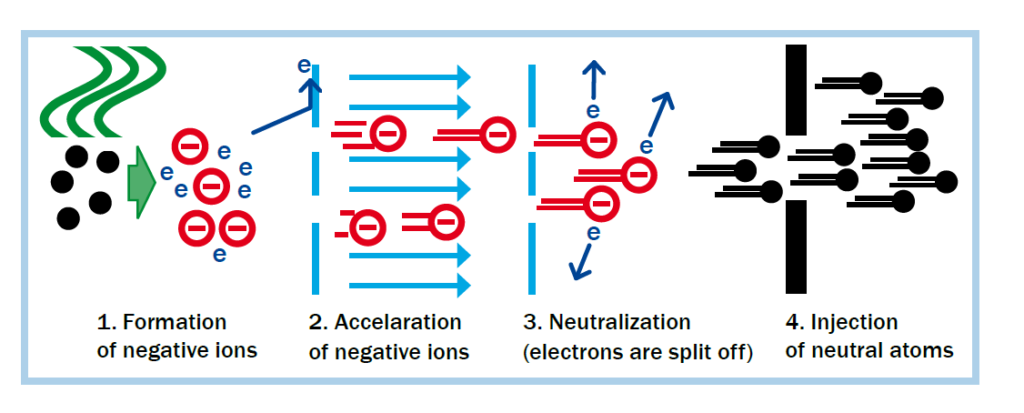Philippe says it was a matter of luck. By the time he was about to finish his PhD thesis in 2002 he met someone, by chance, who was looking for entrepreneurial ideas. “While searching information on different plasma sources I found a theoretical study about helicon waves. The pattern reminded me of the field generated by the ‘birdcage’ antenna which is commonly used in Nuclear Resonance Imaging.”
All about plasma
Philippe signed a research project with the French company Alcatel. Since he, back then, had no experience with plasma research he collaborated with the Swiss Plasma Center (SPC, at the time called Center for Research in Plasma Physics). The lab enabled him to test his ‘birdcage’ antenna for producing helicon plasmas; plasmas that are highly desired in various fields. It is not only the food-packaging industry that is interested (see information box) fusion research was also eager to investigate Philippe’s new plasma source.

New way to neutralize particles
One of the most common ways to heat plasma is via Neutral Beam Injection (NBI). The trouble with this is the small wall-plug efficiency of this method, which will have to be maximised in a future fusion reactor.
NBI involves four stages (see illustration above). Stage three of the process is the neutralisation of the charged ions. The usual way is to accelerate positive ions. Recombining the ions with electrons neutralizes them in stage three. This neutralisation may cause the loss of ions.
One of the proposed solutions in order to avoid ion loss is photo-neutralization, in which photo-detachment is used to strip the electrons from the ions, thus neutralising them. But, this method requires a very special type of plasma in the ion source, in the shape of a long and thin column.
In fact, the required precise plasma shape is difficult to realise. And this is where Philippe’s birdcage antenna comes in. Its induced waves generate the required negative ion-rich plasma column. “The helicon source proved very efficient for high-density plasmas with moderate injection power”, says Ivo Furno from SPC who has worked with Philippe for some years now.

New dimensions in France
Both now aim to take this approach to new dimensions. In conjunction with EUROfusion’s French Research Unit CEA in Cadarache, they are currently developing a 10 kW helicon plasma generator for neutral beams (NB) for the next generation of fusion devices. The larger helicon source will be installed in the Cybele device at CEA which tests the photo-neutralisation of negative ion beams.
A marketing boost
It remains to be seen if Philippe’s idea will improve heating scenarios for future fusion devices. His example further shows how scientific requirements can be converted into industrial reality. “Industry is able to supply research with practical know-how, tools and manpower”, says Ivo. But it is considerably hard for small and middle-sized enterprises participate in such complicated research areas and also, get their foot into the door of multinational and complex projects such as ITER or DEMO. “I think, first of all, you really need the knowledge to understand what the researcher needs from you”, says Philippe. “Once you have you get it done in practice you have a great selling point. Your application has been included in a Big Science Project which is a huge marketing boost when engaging with future clients”, says Philippe.
Helyssen and Tetra Pak: How to un-spill the milk
Helyssen is also collaborating with the Tetra Pak Processing GmbH. This is the company that puts milk into small cardboard boxes. The packaging material is made of paper but must also be water-proof and a barrier for oxygen. Hence, it needs to be coated with a special layer. The aluminium foil currently applied onto the surface of the packages means that the package is non-disposable. Therefore, Tetra Pak is looking at environmentally friendly solutions which need different application techniques. Here is where Philippe’s plasma application comes in. It is able to precisely deposit the very thin, about 10 nm, barrier coatings on the plastic foils. This technique could finally help to improve the environmental disposal of such boxes.
